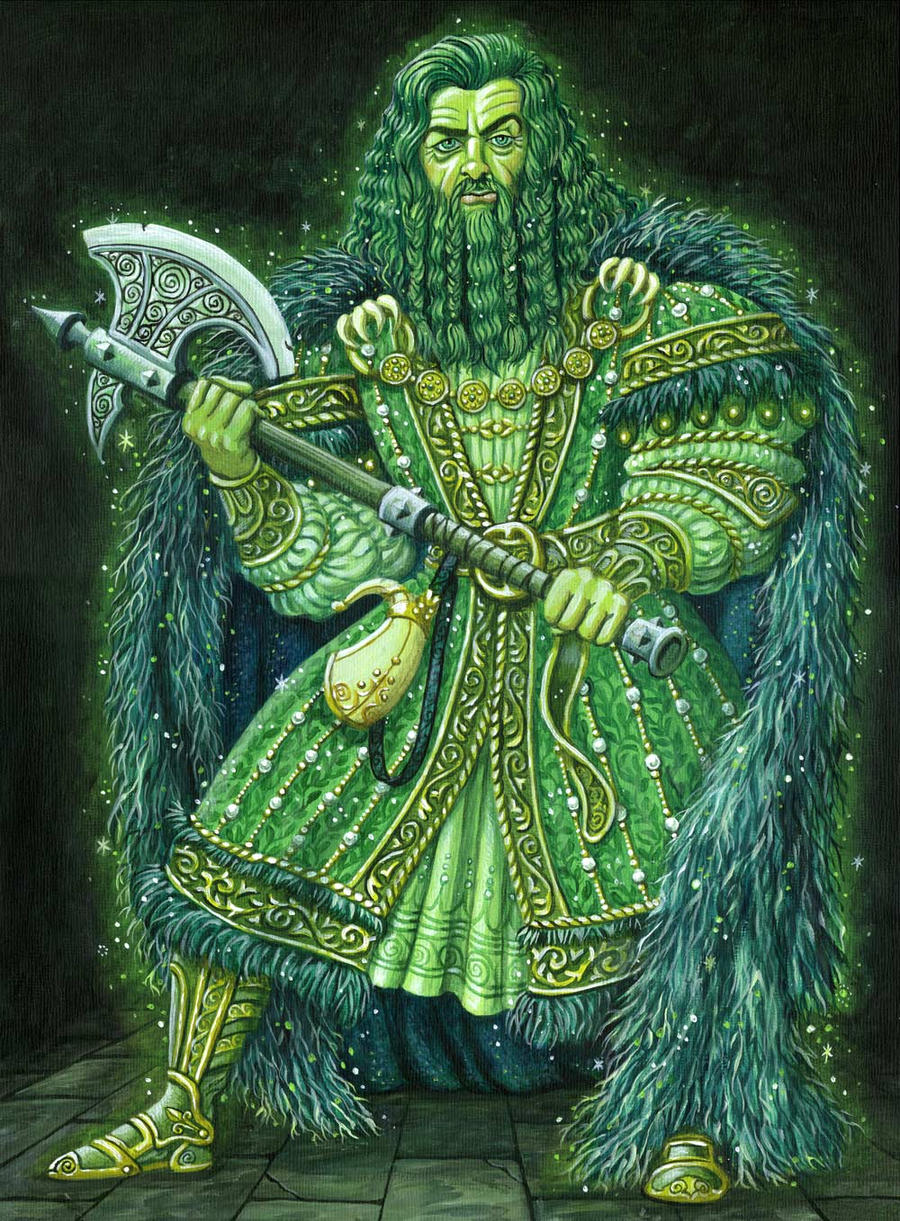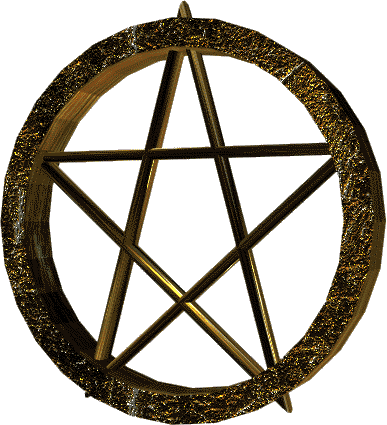Sir Gawain and the Green Knight is from a list of tales considered “Arthurian,” or relating to the legends of King Arthur and his knights. This particular tale was written in the 14th century (about the time Chaucer was also writing his work, The Canterbury Tales) by an anonymous author (also known as the "Pearl Poet") (Sir Gawain). He is considered one of the greatest poets of the period, and wrote using a North West Midland dialect of English, which included words from the Scandinavian and French languages (not to mention an alliterative poetic style) (Notes).
There are a number of reasons for why Sir Gawain and the Green Knight is a significant work of its time. The most important reasons for the tale's significance are the symbolism found in the work, and the style in which it was written, due to their mutual relation to the religious and moral codes found during the 14th century.
The pentangle (as pictured above) is on Sir Gawain shield in Part II (Norton 1656) and its symbolism is described in lines 619-665. They are: '1. "Fiue wyttez" (five senses): may indicate that Gawain did not sin through sensual indulgence...
'2. "Fyue fyngres" (five fingers): no special significance is apparent here; may signify manual competence or physical strength. Some critics refer to the use in some devotional manuals of the image of the five-fingered hand.
'3. "Fyue woundez" (Five Wounds of Christ): a typical subject of meditation; here Gawain's fealty or faith is said to depend on them.
'4. "Fyue joyez" (Five Joys of Mary): a variable list, but usually Annunciation, Nativity, Resurrection, Ascension, Assumption; here Gawain's force or valour or bravery is said to derive from them (forsnes 'fortitude' in the original).
'5. The "fyft fyue" are the social virtues...' (Notes).
The pentangle is a symbol that has significance in "pagan" tradition as well, but is given religious value in this tale in order to give it about the same sort of significance as it originally held. "Therefore, this symbol, like many other symbols utilized by knights and soldiers, were (sic) taken and used to represent a knight's particular religious beliefs for the purpose of protection, physical remembrance and reverence to religious beings, or personal representation of one's own values and aspirations as a pious and chivalric virtues of a knight" (Religion).
Just as the hero in most epic poems is described in narratives dripping with rich praise, Sir Gawain is described as being virtuous and overall a "good knight" throughout the work (Norton 1659, line 748). He has strong moral fiber and though he is tempted, he never commits adultery (but he isn't above kissing--and I mean everyone). By the end of the tale, Sir Gawain shows that he isn't perfect, however, and comes back with the girdle and a nick from the Green Knight to show for his failings (though King Arthur and the rest of his gang all appear pretty unperturbed about both considering their reaction at the end).
Overall, this work shows the importance of the code of chivalry to those living in the 14th century. It uses symbolism to express the pious and generally good nature of Sir Gawain--both religiously and morally--through specific items (such as the pentangle and the girdle). While it expresses the ideas dearest to the medieval society, it also moves its readers through language that flows with beautiful alliteration and descriptive genius.
The Green Knight's horse, just chilling out in the pasture with a friend...




No comments:
Post a Comment